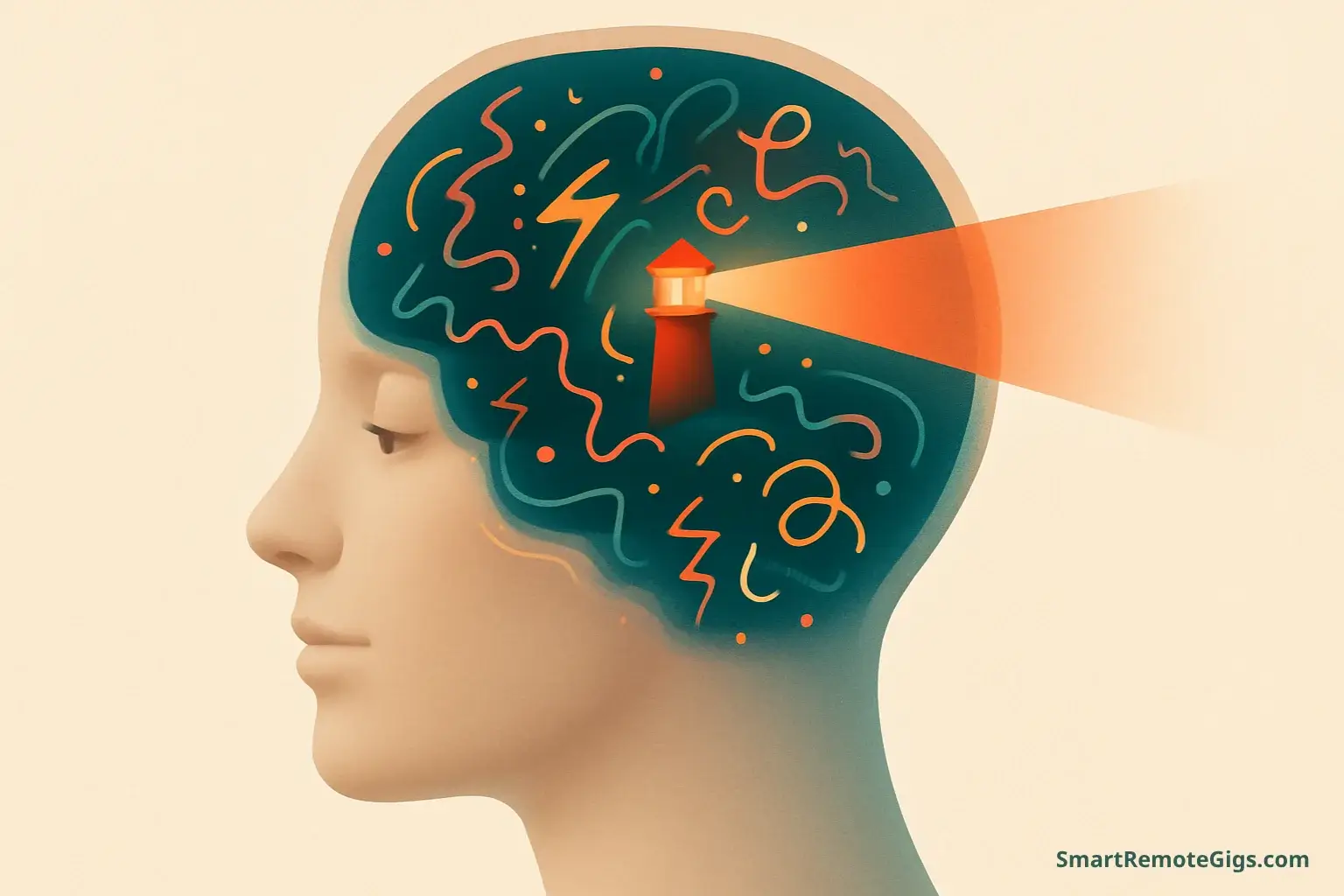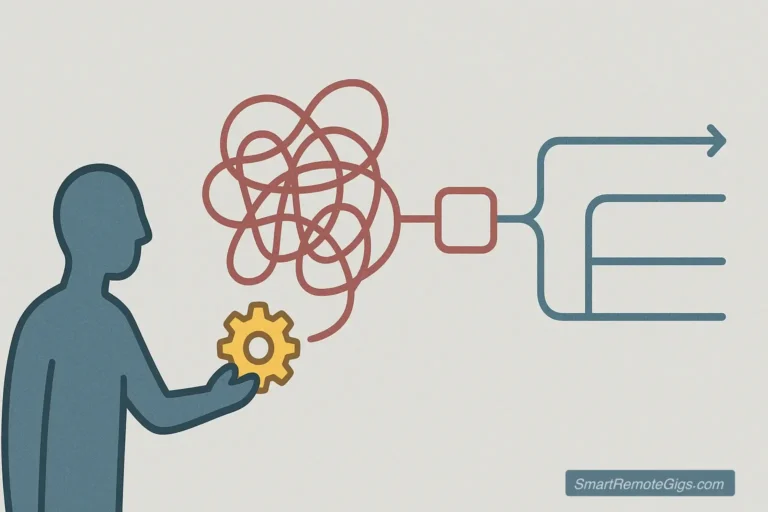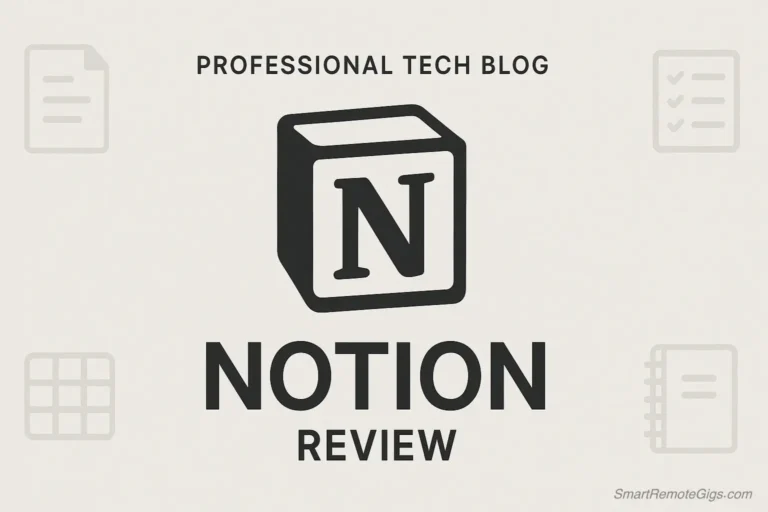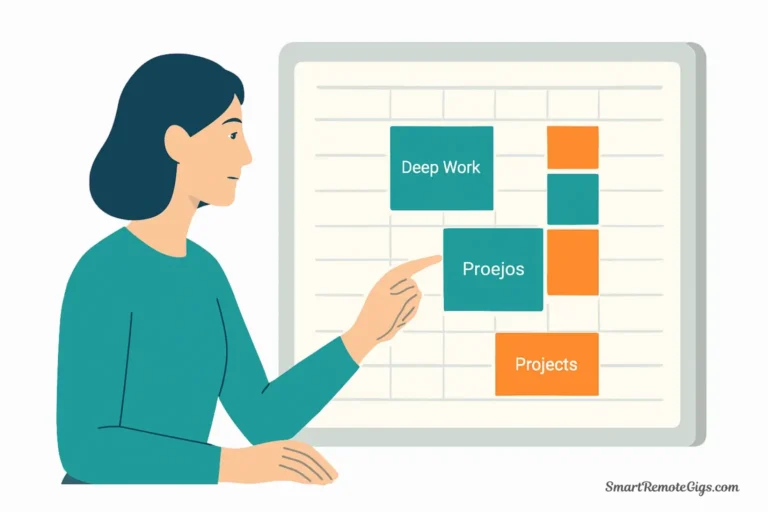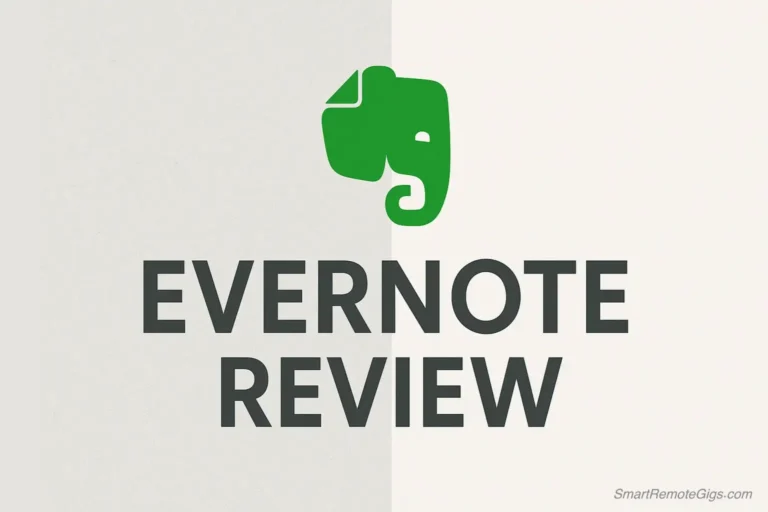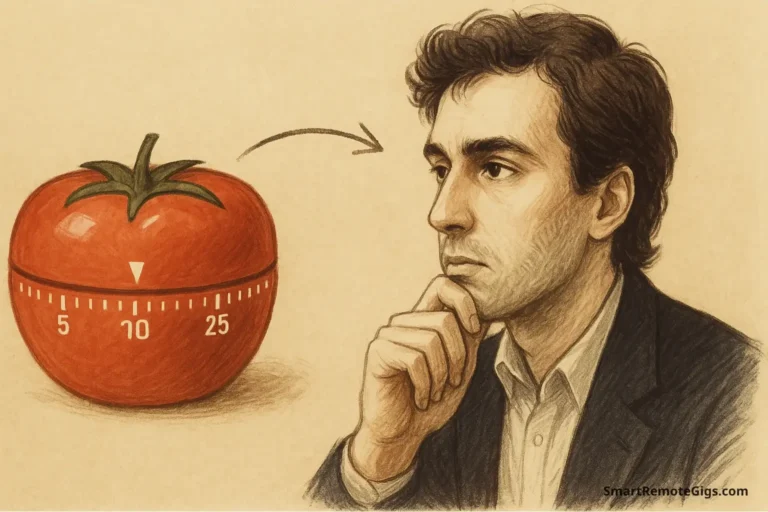If you have ADHD, you’ve probably heard about the Pomodoro Technique and wondered if it could help tame your racing mind and scattered attention. But the relationship between the Pomodoro Technique and ADHD is more complex than it seems. Maybe you’ve even tried it—only to find yourself hyperfocusing through the timer or struggling to return from breaks. You’re not alone in this experience, and you’re not doing anything wrong.
The truth is, the traditional Pomodoro Technique can be both a blessing and a challenge for ADHD brains. While the structure and time-bounded nature of the method align beautifully with ADHD needs for external accountability and clear boundaries, the rigid 25-minute intervals can clash with the unique ways neurodivergent minds work.
Your ADHD brain doesn’t lack focus—it focuses differently. Sometimes you can lose yourself in a task for hours (hello, hyperfocus), while other times starting a five-minute task feels impossible. Traditional time management advice often ignores these realities, leaving you feeling like productivity systems weren’t designed for minds like yours.
But here’s what we’ve learned from both neuroscience research and the experiences of thousands of people with ADHD: the Pomodoro Technique can be incredibly effective for ADHD focus and productivity—when it’s adapted to work with your brain, not against it.
In this guide, we’ll explore why the standard Pomodoro approach can feel like a double-edged sword for ADHD minds, then dive into seven science-backed strategies that transform this popular technique into a powerful ADHD productivity tool. By the end, you’ll have a personalized framework that honors both your need for structure and your brain’s unique patterns.
If you’re completely new to the Pomodoro method, we recommend starting with our foundational Pomodoro Technique Guide to understand the basic framework before diving into these ADHD-specific adaptations.
Why the Standard Pomodoro Can Be a Double-Edged Sword for ADHD
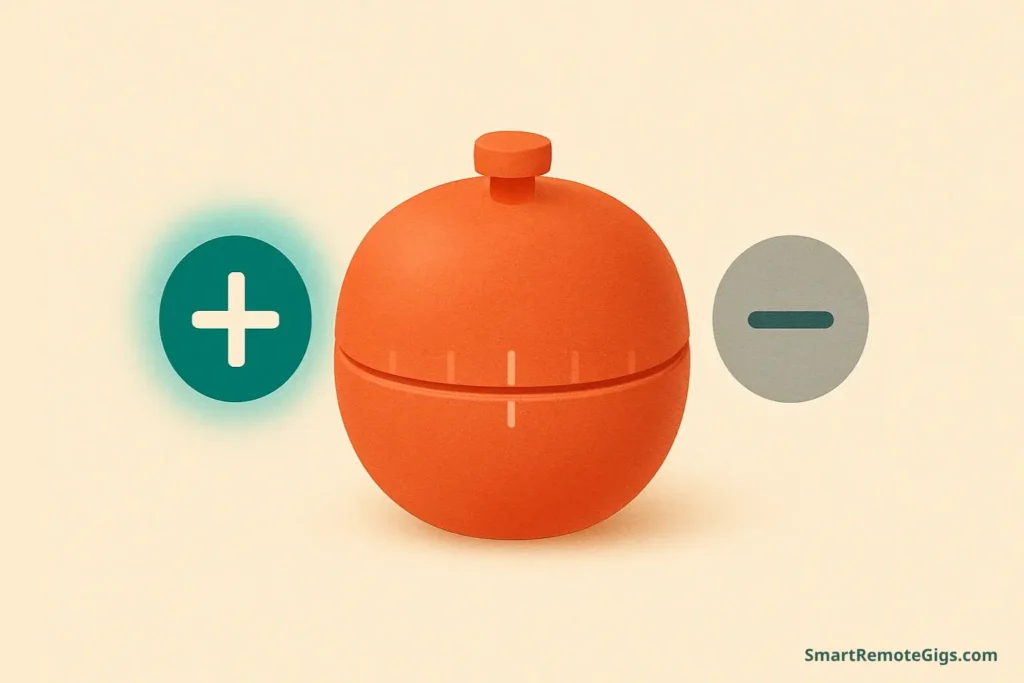
The Pomodoro Technique presents a fascinating paradox for ADHD brains. Many of its core elements seem tailor-made for the challenges you face, while others can feel like they’re working against your natural patterns. Understanding this duality is crucial for adapting the technique successfully.
The Pros: When Pomodoro Meets ADHD Strengths
🎯 External structure compensates for internal disorganization. ADHD brains often struggle with self-directed executive function, but they respond exceptionally well to external frameworks. The Pomodoro’s clear timing structure provides the scaffolding that your prefrontal cortex might struggle to create independently.
⚡ Urgency creates focus. The ticking timer generates a sense of urgency that can trigger the ADHD brain’s “crisis mode”—that state where you suddenly become laser-focused and incredibly productive. This artificial deadline helps overcome the executive dysfunction that makes starting tasks feel impossible.
🎮 Gamification taps into dopamine rewards. Each completed Pomodoro becomes a small win, providing the regular dopamine hits that ADHD brains crave. This gamified approach transforms mundane tasks into achievable challenges, making it easier to maintain motivation throughout longer projects.
🔚 Clear endpoints prevent overwhelm. One of the biggest ADHD challenges is task paralysis when projects feel too large or undefined. The 25-minute boundary creates a manageable container that makes even overwhelming projects feel approachable. You’re not committing to “organizing your entire office”—you’re committing to 25 minutes of progress.
📊 Visual progress tracking satisfies the need for immediate feedback. Many people with ADHD are visual learners who need to see their progress to stay motivated. Tracking completed Pomodoros provides concrete evidence of productivity, which can be especially valuable for those who struggle with rejection sensitivity or self-doubt.
The Cons: Where Standard Pomodoro Clashes with ADHD Patterns
🔄 Rigid timing interrupts natural hyperfocus states. When your ADHD brain finally locks onto a task and enters hyperfocus, being forced to stop after 25 minutes can feel jarring and counterproductive. These deep focus states are precious for ADHD minds, and arbitrary interruptions can break the momentum that’s often difficult to regain.
😰 Transition anxiety makes returning from breaks difficult. Many people with ADHD struggle with task transitions due to executive function challenges. The five-minute break might turn into 20 minutes of procrastination, not because you’re lazy, but because switching back to work mode requires mental energy that feels depleted.
⏰ Time blindness makes break management challenging. ADHD often involves difficulties with time perception and awareness. Without proper structure, breaks can extend indefinitely, while work sessions might feel either endless or surprisingly short, making it hard to gauge when to stop or start.
🧠 Overstimulation during breaks can backfire. Standard break advice often doesn’t account for sensory processing differences common in ADHD. What’s meant to be restorative might actually increase stimulation and make it harder to refocus when returning to work.
7 Science-Backed Strategies for an ADHD-Friendly Pomodoro
These adaptations transform the traditional Pomodoro framework into a flexible, neurodivergent-friendly system that works with your ADHD brain’s unique patterns and needs.
Strategy 1: Start with Micro-Pomodoros (10-15 minutes)
The ADHD Reality: Traditional 25-minute sessions can feel overwhelming when executive dysfunction makes task initiation difficult. Your brain might resist committing to what feels like a long period of sustained attention.
The Adaptation: Begin with 10-15 minute work sessions. This lower commitment threshold reduces the mental barrier to starting, making it easier to overcome the initial resistance that often keeps ADHD minds stuck in procrastination.
Why It Works: Shorter intervals align with research showing that ADHD attention spans are often shorter but can be trained to extend gradually. Success with micro-Pomodoros builds confidence and attention stamina, creating a positive feedback loop that makes longer sessions possible over time.
Implementation Tips:
- Start with 10 minutes for new or difficult tasks
- Use 15 minutes for familiar or engaging work
- Gradually increase session length as your focus stamina improves
- Celebrate every completed micro-session as a genuine achievement
Strategy 2: Use a Physical, Visible Timer

The ADHD Reality: ADHD brains are often highly visual and benefit from external cues. Digital timers on phones or computers can be easily forgotten or overlooked, especially when hyperfocus kicks in.
The Adaptation: Invest in a large, physical timer that you can see in your peripheral vision. Choose one with a clear visual display and, if possible, a subtle but noticeable countdown feature.
Why It Works: Visual timers provide constant awareness of time passage without being intrusive. This helps address the time blindness common in ADHD while providing a physical anchor that keeps you connected to the timing structure even during intense focus.
Implementation Tips:
- Place the timer where you can see it without turning your head
- Choose a timer with a satisfying sound that signals completion
- Consider timers with color-changing displays that show time progression
- For digital options, use apps with large, always-visible displays
Strategy 3: Create an “Activity Menu” for Breaks
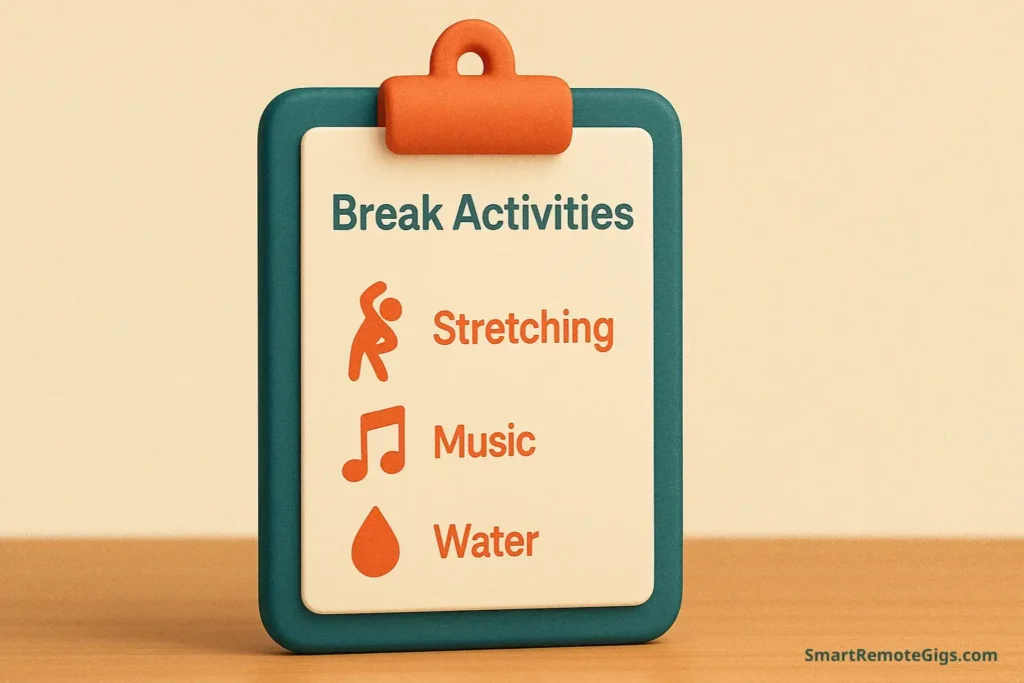
The ADHD Reality: Unstructured break time often leads to decision paralysis or falling into “time sink” activities like social media scrolling. The executive function challenges that make work difficult also make break planning challenging.
The Adaptation: Pre-plan your break activities with a written “break menu” of 5-10 specific options categorized by energy level and duration. This removes in-the-moment decision-making and provides structure when your executive function is depleted.
Sample Break Menu:
- 5-minute energizers: Jumping jacks, deep breathing, drink water, look out window
- 5-minute calm-downs: Stretch, listen to one song, pet your cat, organize your desk
- Movement breaks: Walk around the block, do yoga poses, dance to music
- Sensory breaks: Fidget with stress ball, use essential oils, change lighting
Implementation Tips:
- Write your menu when you’re feeling focused and creative
- Include options for different moods and energy levels
- Keep the list visible near your workspace
- Experiment and update your menu regularly
Strategy 4: Leverage Body Doubling or Accountability Apps
The ADHD Reality: Many ADHD brains work better with external accountability and the presence of others. The isolation of solo productivity techniques can actually make focus more difficult.
The Adaptation: Incorporate social accountability into your Pomodoro practice through body doubling (working alongside others) or technology-based accountability systems.
Body Doubling Options:
- Work alongside friends or colleagues (in person or virtually)
- Join online “body doubling” sessions or study groups
- Use co-working apps that connect you with other focused workers
- Ask a trusted person to check in on your Pomodoro goals
Accountability App Features to Look For:
- Social challenges or group participation
- Progress sharing capabilities
- Gentle reminders and encouragement
- Visual progress tracking
Implementation Tips:
- Start with low-pressure accountability (like a gentle app) before trying social options
- Choose accountability partners who understand ADHD challenges
- Set up systems that provide support without judgment
- Use accountability as motivation, not pressure
Apps like Focusmate, which we cover in our guide to the Best Pomodoro Timer Apps, are designed specifically for this kind of virtual co-working and accountability.
Strategy 5: “Bookend” Your Sessions with Clear Rituals
The ADHD Reality: Transitions are often the most challenging part of any productivity system for ADHD brains. Without clear boundaries, it’s easy to either struggle with starting or have difficulty stopping when hyperfocus takes over.
The Adaptation: Create specific rituals that signal the beginning and end of each Pomodoro session. These rituals serve as external cues that help your brain shift gears more smoothly.
Starting Rituals (Choose 1-2):
- Take three deep breaths and state your specific goal out loud
- Clear your physical workspace and put away distractions
- Put on focus music or noise-canceling headphones
- Write your session goal on a sticky note and place it where you can see it
Ending Rituals (Choose 1-2):
- Stand up and stretch immediately when the timer sounds
- Write one sentence about what you accomplished
- Reset your workspace for the next session
- Take a moment to acknowledge your effort and progress
Implementation Tips:
- Keep rituals simple and achievable
- Practice the same rituals consistently to build automatic habits
- Adjust rituals based on what feels most natural for your brain
- Use physical movement in rituals to help with transitions
Strategy 6: Protect Your Hyperfocus (Know When to Break the Rules)

The ADHD Reality: Hyperfocus is one of ADHD’s superpowers, but traditional productivity advice often treats it as a problem to be managed rather than a strength to be leveraged.
The Adaptation: Develop hyperfocus awareness and give yourself permission to extend sessions when you’re in a flow state. The key is making this decision consciously rather than defaulting to always breaking the rules.
How to Recognize Healthy Hyperfocus:
- You’re making genuine progress, not just staying busy
- The work feels engaging rather than compulsive
- You’re not avoiding other important responsibilities
- You feel energized rather than depleted
The “Hyperfocus Exception” Protocol:
- When the timer rings during good focus, pause and assess
- Ask: “Am I making valuable progress and feeling good?”
- If yes, reset the timer for another 15-25 minutes
- Take a proper break after the extended session
- Return to regular timing for subsequent sessions
Implementation Tips:
- Don’t extend every session—make it special for true hyperfocus
- Set a maximum extension time (usually 45-60 minutes total)
- Always take a longer break after extended sessions
- Track when hyperfocus extensions are most beneficial
Strategy 7: Pair It with a Dopamine-Friendly Task List
The ADHD Reality: ADHD brains are motivated by interest, challenge, urgency, and novelty—not necessarily by importance or priority. Traditional task lists often fail to account for these motivational differences.
The Adaptation: Create task lists that work with your dopamine-driven motivation by incorporating elements that make tasks more appealing to your ADHD brain.
Dopamine-Friendly Task List Elements:
- Variety packs: Mix different types of tasks within your day
- Difficulty ratings: Include easy wins alongside challenging work
- Interest levels: Note which tasks you’re naturally drawn to
- Urgency indicators: Highlight time-sensitive items
- Progress visualization: Use checkboxes, progress bars, or completion percentages
Sample Task Format:
Instead of: “Work on presentation”
Try: “Create 3 slides for client presentation (Medium difficulty, Due Friday, 1 Pomodoro estimated) ⭐”
Implementation Tips:
- Review and adjust your task list regularly to maintain novelty
- Include a mix of must-do and want-to-do items
- Use colors, symbols, or other visual elements that appeal to you
- Celebrate task completion in ways that feel rewarding
For those who want to create a comprehensive system for managing all their tasks and projects in a structured way, the framework in our Pomodoro & GTD integration guide can provide powerful scaffolding for the ADHD brain.
Real-World Scenarios: Applying the Adapted Pomodoro
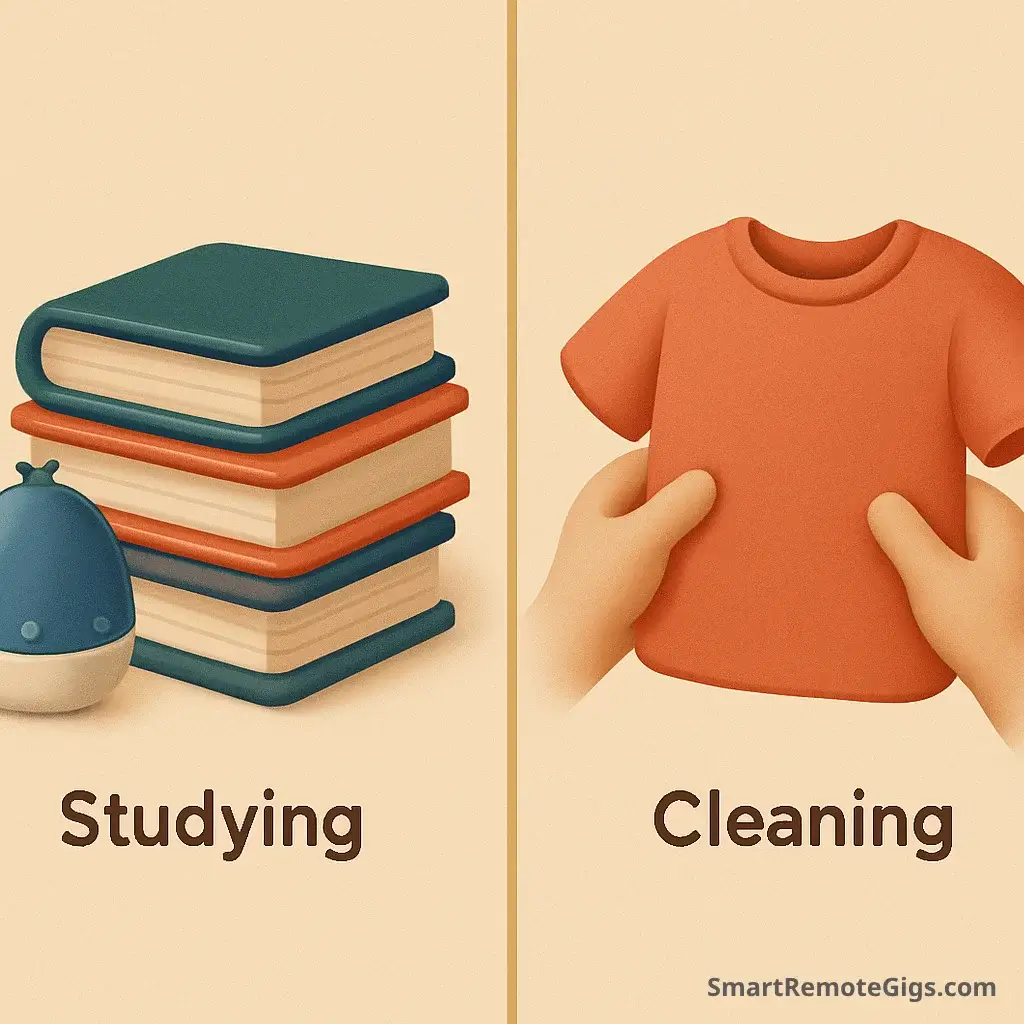
Let’s see how these ADHD-friendly strategies work in practice with two common challenges.
Scenario 1: Studying for an Exam
The Challenge: You have a comprehensive exam in two weeks, and the amount of material feels overwhelming. Traditional study advice says to create a schedule and stick to it, but your ADHD brain rebels against rigid study plans.
The ADHD-Adapted Approach:
Week 1 – Building Momentum:
- Start with 10-minute micro-Pomodoros to reduce study resistance
- Use your break menu: 5 minutes of movement between each session
- Create variety packs: alternate between reading, flashcards, and practice problems
- Body double with virtual study groups for accountability
Session Example:
- 10 minutes: Review chapter 3 main concepts
- 5-minute break: Walk around and drink water
- 10 minutes: Create 5 flashcards from chapter 3
- 5-minute break: Listen to one energizing song
- 15 minutes: Practice problems from chapter 3
Week 2 – Leveraging Hyperfocus:
- Increase to 15-20 minute sessions as confidence builds
- Use the hyperfocus exception when you hit flow states with practice problems
- Implement urgency-based scheduling closer to exam date
Scenario 2: Cleaning a Messy Room
The Challenge: Your room has reached overwhelming levels of clutter, and every time you try to clean, you either get distracted by interesting items you find or become paralyzed by not knowing where to start.
The ADHD-Adapted Approach:
Preparation:
- Break the room into zones (desk area, closet, floor, bed area)
- Create specific 10-minute tasks: “Put all clothes in hamper or closet”
- Set up your physical timer where you can see it
- Prepare a playlist of 3-4 energizing songs for breaks
Session Sequence:
- Pomodoro 1: Clear everything off the bed (10 minutes)
- Break: Dance to one song
- Pomodoro 2: Sort clothes into “keep,” “donate,” “wash” piles (15 minutes)
- Break: Stretch and hydrate
- Pomodoro 3: Put “keep” clothes away properly (10 minutes)
Key Adaptations:
- Focus on one small area at a time to prevent overwhelm
- Use shorter sessions since cleaning can be less engaging than preferred activities
- Include movement breaks to maintain energy
- Celebrate each completed area as a genuine win
Conclusion: A Tool for Empowerment, Not a Rigid Cage
The Pomodoro Technique doesn’t have to be a one-size-fits-all system that ignores your ADHD brain’s unique strengths and challenges. When adapted thoughtfully, it becomes a flexible framework that provides structure without rigidity, boundaries without restriction.
Remember that the goal isn’t to force your ADHD brain into a neurotypical productivity mold. Instead, you’re creating a personalized system that honors your need for variety, respects your hyperfocus cycles, and provides the external structure that helps your executive function thrive.
Some days your ADHD-adapted Pomodoro sessions will flow beautifully, and you’ll accomplish more than you thought possible. Other days, completing even one 10-minute session will be a victory worth celebrating. Both outcomes are valid and valuable.
The key is self-compassion and flexibility. Your worth isn’t measured by your productivity, and your ADHD isn’t something to be overcome—it’s a neurological difference that comes with both challenges and remarkable strengths. The adapted Pomodoro technique is simply a tool to help you work with your brain, not against it.
Start with one or two of these strategies rather than trying to implement everything at once. Notice what feels supportive versus what feels restrictive, and adjust accordingly. Your personalized approach will evolve as you learn more about your own patterns and preferences.
For those ready to dive deeper into focus techniques for ADHD and other neurodivergent productivity tools, consider exploring resources from CHADD (Children and Adults with Attention-Deficit/Hyperactivity Disorder), which offers evidence-based information about ADHD and executive function strategies.
Your ADHD brain is capable of incredible focus, creativity, and productivity—it just needs the right tools and approach. The adapted Pomodoro technique can be one powerful tool in your toolkit, helping you harness your strengths while providing support for your challenges.
What will you try first?
This guide provides 7 science-backed strategies to adapt the Pomodoro Technique for ADHD brains. Learn how to use micro-pomodoros, physical timers, and accountability apps to improve focus and productivity.
Total Time: 7 days
Start with Micro-Pomodoros (10-15 minutes)
The traditional 25-minute session can feel overwhelming. Begin with 10-15 minute work sessions to reduce the mental barrier to starting and build your focus stamina gradually.
Use a Physical, Visible Timer
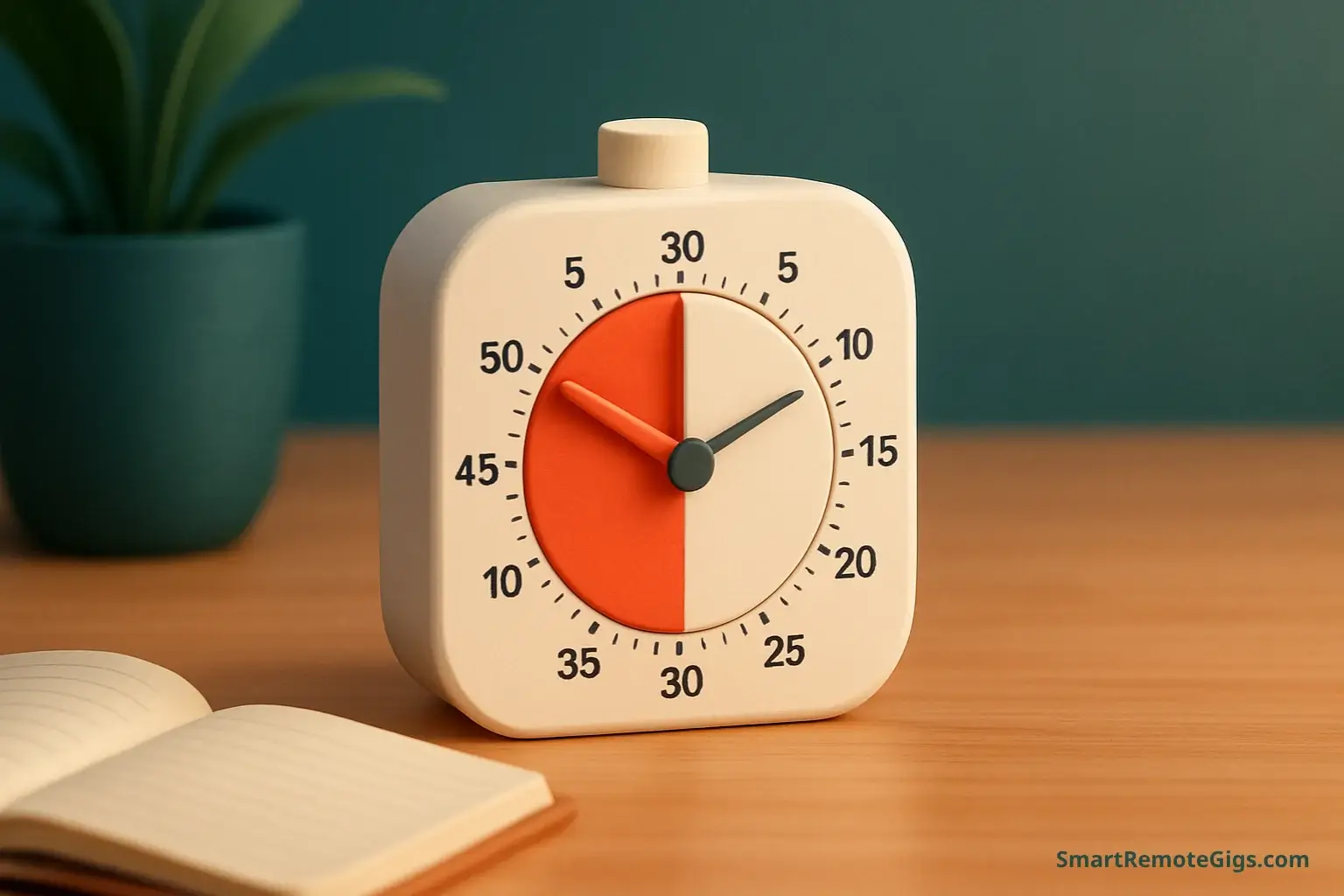
ADHD brains benefit from external cues. Use a physical timer that you can see in your peripheral vision. This provides constant awareness of time passage and helps address time blindness.
Create an “Activity Menu” for Breaks
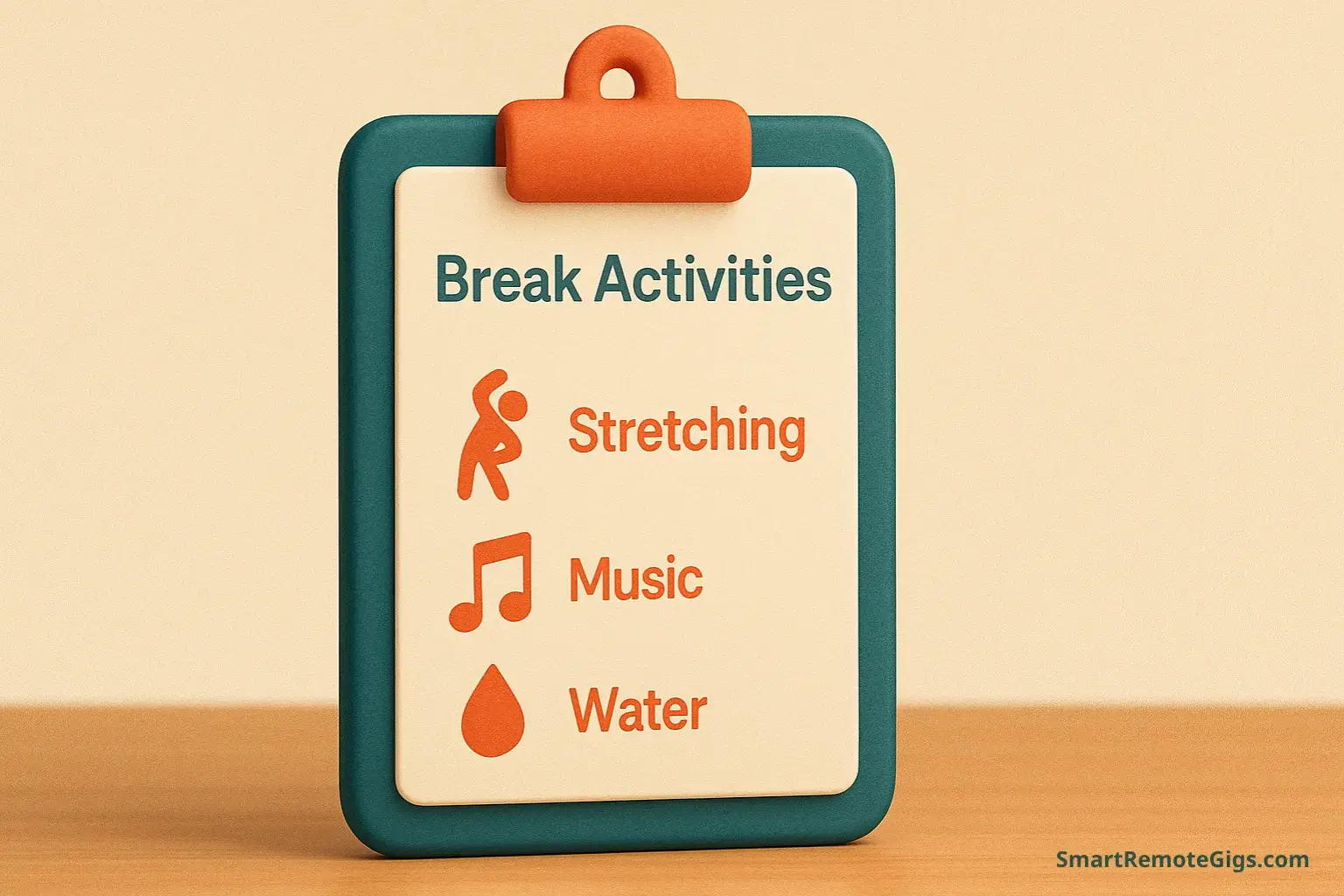
Unstructured break time can lead to decision paralysis. Pre-plan your break activities with a written “break menu” of 5-10 specific options categorized by energy level and duration.
Leverage Body Doubling or Accountability Apps
Incorporate social accountability into your practice. Work alongside friends, join online body doubling sessions, or use co-working apps like Focusmate to maintain focus.
“Bookend” Your Sessions with Clear Rituals
Create specific rituals that signal the beginning and end of each session. These external cues help your brain shift gears more smoothly. Examples include deep breathing, clearing your workspace, or standing up and stretching.
Protect Your Hyperfocus (Know When to Break the Rules)
Hyperfocus is an ADHD superpower. Develop hyperfocus awareness and give yourself permission to consciously extend sessions when you’re in a flow state. Take a proper long break after the extended session.
Pair It with a Dopamine-Friendly Task List

Create task lists that work with your dopamine-driven motivation. Include a variety of tasks, difficulty ratings, and interest levels to make your to-do list more appealing.
Tools:
- A physical, visible timer
- An "Activity Menu" for breaks
- An accountability app or body doubling partner
- A dopamine-friendly task list
